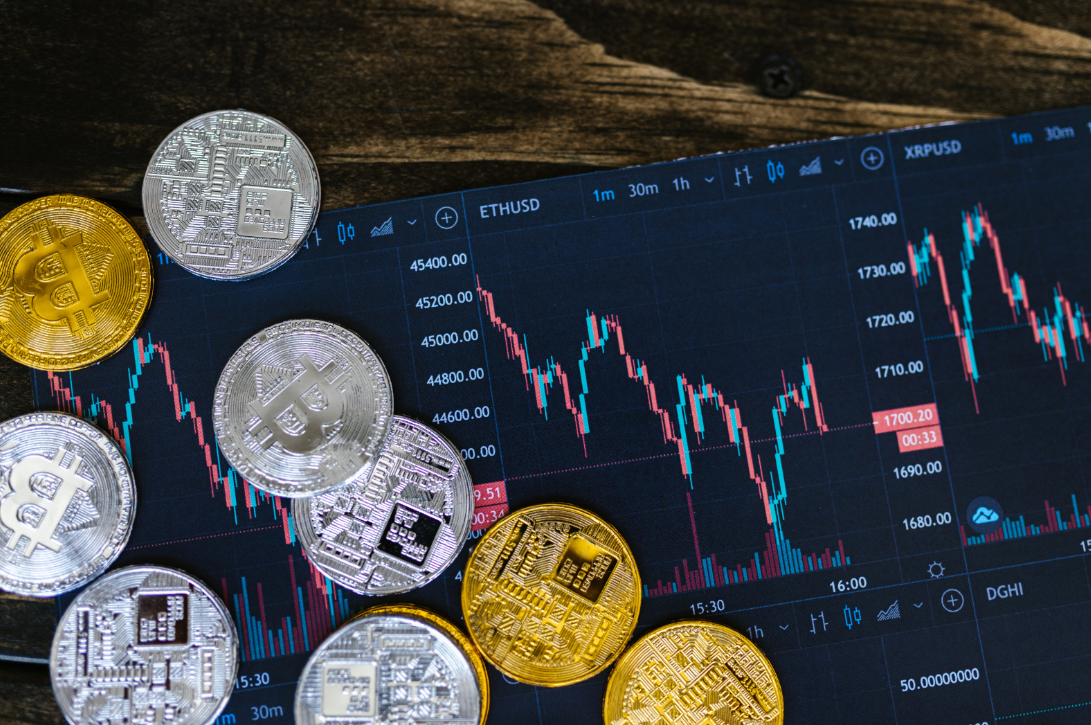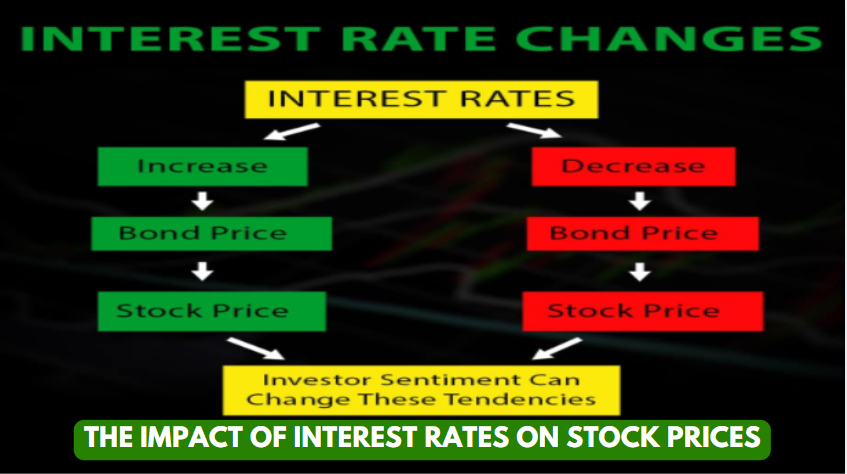No products in the cart.
Stock Market
Understanding the Profound Impact of Interest Rates on Stock Prices 2025
“The Impact of Interest Rates on Stock Prices”
Overview
Interest rates play a crucial role in shaping financial markets, influencing everything from consumer spending to business investment decisions. One of the most significant areas of impact is on asset prices — particularly stock prices. For investors, especially those navigating emerging markets like the Philippines, understanding how shifts in interest rates affect the stock market is essential for building effective strategies and managing risks. This blog delves into the intricate relationship between interest rate movements and stock price behavior, shedding light on the unique factors that shape this dynamic in the Philippine context.
What Are Interest Rates?
Interest rates represent the cost of borrowing money and the returns earned on savings or investments. Central banks determine these rates, which are further influenced by various economic factors. In the Philippines, two primary categories are worth noting:
- Policy Rates: Set by the Bangko Sentral ng Pilipinas (BSP), this rate serves as the benchmark for other lending and deposit rates in the country.
- Market Rates: These reflect broader market sentiment and risk assessments, encompassing rates on corporate and government bonds.
How Interest Rates Influence Stock Prices
Changes in interest rates impact stock prices through several mechanisms:
1. Borrowing Costs and Business Growth
When rates rise, borrowing becomes more expensive, prompting businesses to scale back on expansion plans or delay investments. This can lead to slower growth and reduced future earnings, potentially dragging stock prices down. Conversely, lower rates make financing cheaper, encouraging growth and pushing valuations upward.
2. Discounting Future Earnings
In valuation models, rates act as the discount factor used to calculate the present value of future earnings. Higher rates increase this discount, making future cash flows less attractive and lowering stock prices. On the flip side, reduced rates decrease the discount factor, making future profits more valuable and boosting market prices.
3. Consumer Spending and Investment
Changes in borrowing costs don’t just affect businesses — they influence consumer behavior too. Higher rates discourage spending, which can weaken corporate sales and earnings, creating downward pressure on the market. In contrast, lower rates make loans and credit more accessible, stimulating spending and investment, which can support higher valuations.
Interest Rates in the Philippine Context
Understanding how changes in borrowing costs impact the Philippine stock market requires a closer look at the nation’s unique economic landscape:
1. The BSP’s Role in Monetary Policy
The BSP plays a pivotal role in setting the nation’s policy rate, carefully weighing factors like inflation, economic growth, and global conditions. Adjustments to this rate directly influence the cost of credit, shaping investment behavior and overall market sentiment.
2. Economic Growth and Inflation
In periods of rapid economic expansion, rising inflation may prompt the BSP to hike rates to prevent overheating, often leading to market corrections. Conversely, during economic slowdowns, the BSP may cut rates to stimulate growth, which can trigger bullish market behavior as companies benefit from cheaper financing.
3. Foreign Investment Flows
The Philippines also attracts foreign capital seeking higher returns. When local rates climb, foreign investors may flock to Philippine assets, strengthening the peso and supporting the market. However, falling rates may encourage capital outflows, potentially dampening market performance.

Case Study: The Philippine Stock Exchange
Examining historical data reveals how shifts in borrowing costs have influenced the Philippine Stock Exchange (PSE):
- Historical Trends: Periods of rate hikes aimed at curbing inflation often coincided with increased market volatility. In contrast, phases of easing monetary policy typically spurred bullish trends as liquidity improved.
- Recent Patterns: During the COVID-19 pandemic, the BSP slashed rates to support the economy, flooding the financial system with liquidity. As a result, investor appetite grew, driving the PSE index higher despite broader economic uncertainty.
Practical Investment Strategies
For Filipino investors, tracking rate changes is crucial for making informed decisions. Here are some practical strategies:
- Monitor BSP Announcements: Keeping an eye on policy statements provides insight into future rate movements and their potential market impact. The BSP’s decisions on interest rates serve as a key indicator of economic health and future market trends. Rate hikes often signal efforts to curb inflation, which could slow economic activity and pressure stock prices, especially in interest-rate-sensitive industries. Conversely, rate cuts may indicate a push to stimulate growth, making equities more attractive as borrowing costs decrease. Regularly following BSP press releases, economic briefings, and inflation reports will provide insight into potential rate movements and their broader market impact.
- Diversification: Spreading investments across different industries can reduce exposure to rate-sensitive sectors like financials and real estate. Banks, for instance, may benefit from rising rates due to increased lending margins, while property developers could face headwinds as higher borrowing costs dampen demand for real estate. By spreading investments across different industries — such as consumer staples, utilities, healthcare, and technology — investors can mitigate risks and balance their exposure. Diversification also ensures that gains in resilient sectors offset potential losses in more vulnerable ones during periods of rate fluctuations.
- Focus on Fundamentals: While borrowing costs influence short-term market swings, long-term investors should prioritize businesses with solid fundamentals and growth potential. Businesses with strong balance sheets, consistent cash flows, and sustainable growth drivers are more likely to weather interest rate changes effectively. Companies with low debt levels are particularly attractive in rising rate environments, as they are less burdened by increasing borrowing costs. Additionally, focusing on firms with competitive advantages, robust market positioning, and resilient demand can provide stability and long-term value, regardless of economic conditions.
- Take Advantage of Dividend Stocks: In periods of rising rates, dividend-paying stocks can offer a steady income stream, helping investors cushion potential market volatility. Philippine companies in sectors like utilities, consumer goods, and telecommunications often maintain regular dividend payouts, making them attractive during uncertain times. Investors seeking passive income can benefit from reinvesting dividends, compounding their returns over time.
- Stay Agile and Adapt: Flexibility is key. Markets are constantly evolving, and interest rate changes can create both challenges and opportunities. Filipino investors should remain agile, reviewing their portfolios regularly to ensure alignment with shifting economic conditions. Employing stop-loss orders, setting target prices, and periodically rebalancing portfolios are effective tactics to manage risk while staying positioned for growth.
Incorporating these strategies allows investors to navigate interest rate shifts with greater confidence and resilience. By staying informed, diversifying wisely, and prioritizing long-term value creation, Filipino investors can build robust portfolios capable of weathering economic shifts while unlocking growth opportunities.
The Context of the Philippines
It is important to comprehend how interest rates affect stock prices in the Philippines within the unique economic and financial framework of the nation. Several factors are important:
The Bangko Sentral ng Philippines (BSP) and Monetary Policy
The BSP’s monetary policy has a significant impact on interest rate determination. The BSP considers several criteria while determining the policy interest rate, such as inflation, economic growth, and foreign economic situations. Market interest rates are directly impacted by changes in the BSP’s policy rate, which also has an impact on borrowing costs and investment returns.
Growth of the Economy and Inflation
The interplay between interest rates and stock prices is particular to the Philippine economy because of its strong growth and sporadic high inflation. The BSP may increase interest rates to combat inflation during times of rapid economic expansion, which could affect stock prices. In contrast, the BSP may cut interest rates to support the economy amid slower growth or economic downturns, which could increase stock values.
International Capital
Foreign investment flows are also impacted by interest rates in the Philippines. Increased investment may lead to a strengthening of the peso and maybe a rise in stock prices as a result of higher interest rates drawing in foreign capital looking for greater returns. Lower interest rates, on the other hand, would cause investors to withdraw their cash in search of better returns elsewhere, which might result in lower stock values.
Making educated investment decisions requires Filipino investors to comprehend how interest rates affect stock prices. Here are a few useful things to think about:
Keeping an eye on BSP Policies
Investors should keep a close eye on the BSP’s policy pronouncements and decisions because they shed light on potential future developments in interest rates. Investors who anticipate changes in interest rates can make the necessary adjustments to their holdings.
The act of diversification
Diversification across several industries and asset classes can help reduce risk, especially in light of the volatility that might arise from fluctuations in interest rates. In contrast to industries like financials and real estate, some sectors, like utilities and consumer staples, can be less susceptible to changes in interest rates.
Extended View
Although interest rates have a big short-term impact on stock prices, long-term investors should pay more attention to a company’s core fundamentals. Long-term performance can be sustained by robust enterprises with promising growth prospects, even in the face of changes in interest rates.

In summary
Interest rates wield a profound influence on stock prices through multiple interconnected channels, such as borrowing costs, consumer spending, corporate earnings, and investment flows. In the Philippine context, this relationship becomes even more intricate, shaped by the Bangko Sentral ng Pilipinas’ (BSP) monetary policies, inflationary pressures, economic growth, and the movement of foreign capital. Understanding these factors is crucial for Filipino investors aiming to make well-informed decisions in a constantly evolving market landscape.
When interest rates rise, borrowing becomes costlier, often slowing down business expansion and reducing consumer spending. As corporate earnings expectations adjust downward, stock prices may face pressure. Conversely, during periods of rate cuts, businesses enjoy cheaper access to capital, encouraging growth, innovation, and higher valuations. Consumers also benefit from lower loan costs, driving spending and further boosting market sentiment.
Additionally, changes in interest rates can alter the flow of foreign investments. Higher rates may attract foreign capital seeking better returns, strengthening the peso and elevating stock prices. On the other hand, lower rates might prompt capital outflows as investors seek higher yields abroad, potentially dragging the local market down.
For Filipino investors, recognizing these dynamics is essential to developing strategies that align with economic conditions. Monitoring BSP policy announcements, understanding inflation trends, and tracking global economic factors can offer valuable insights into future market movements. Moreover, adopting a diversified investment approach can provide a buffer against volatility, ensuring portfolios remain resilient across different interest rate environments.
Ultimately, by staying informed, adapting strategies to economic signals, and maintaining a long-term perspective, investors can harness the power of knowledge to navigate the complexities of the stock market with confidence. Interest rate movements are inevitable, but with the right approach, they can be transformed from a source of uncertainty into an opportunity for growth and financial success.
Check out the Video for this Blog:
READ MORE RELATED BLOGS!
READ MORE AND SHARE!
TSOK Chronicles: Unleashing Passion, Dedication, and Excellence in 2024
2023 Your Practical Wedding Guide
Investments and Finance Ultimate Guide
If you like this article please share and love my page DIARYNIGRACIA PAGE Questions, suggestions send me at diarynigracia @ gmail (dot) com
You may also follow my Instagram account featuring microliterature #microlit. For more of my artworks, visit DIARYNIGRACIA INSTAGRAM


Peace and love to you.